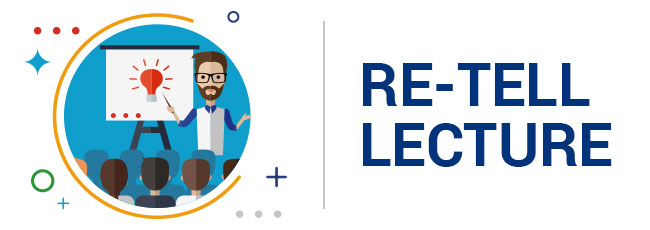PTE marks a candidate through an automated scoring software that evaluates the test completely without any human assessment. In other words, your PTE-A test has no window for emotional empathy that may impact your score, for better or worse.
Any hint of in articulation in your answer will definitely reflect your overall score. If speaking English language is a problem for you, the only solution is to genuinely improve it. You must capitalize your strengths and develop your weaker skills to get the optimum score in your PTE Academic Test.
Speaking section of the PTE test is assessed on two key elements that you will definitely need to have in your repertoire - ‘Fluency’ and ‘Pronunciation’.
We, like most other PTE experts, will recommend you not to focus too much on content, primarily for two reasons.
(A) Because content can draw your focus away from fluency and pronunciation
(B) In effort to complete speaking a dense piece of content, you may risk losing track of the required emphasis (stress) that gives the language its tone
Oral fluency is measured by the flow of speech and correct use of the language (i.e. grammar). Pronunciation, at the same time, is measured by clear and natural articulation that is understandable to the native speaker of the language.
Now, if you’re out in search of a magic trick that will solve your language problem, then we’re afraid there isn’t such a trick! However, there is a technique.
There are plenty of things you can do to improve your English language skills and subsequently increase your PTE score. You need to understand that a language has to be grasped fully in order to be fluent. Yet, it can also be learnt in smaller chunks like syllables, vowels, verbs, nouns and adverbs.
If you do not wish to go deeper into the theory of grammar, you can still get a grip over the language either by listening to words, phrases and sentences repeatedly or by speaking them loudly. You can even listen to some other orator (i.e. public or professional speakers) and use their speech as a guide.
PTE exam highly evaluates those aspirants whose language can be called listener-friendly.
Read Aloud: Read Like You Would Read To Your Friend!

Now the question is, who is the listener here?
A computer! (Most potential PTE test-takers probably know this)
In a PTE-A Test, test taker sits in front of the computer screen. A headset microphone is given which records his/her speech. Candidate has to give his response just as English native speakers.
No need to be alarmed though! Here, "native” does not mean the same accent that the native speaker speaks in. Here, "native” means the same rhythm(flow) and melody(sound) that is inculcated in a native speaker's language.
Most language proficiency exams merit an individual based on his or her capacity to understand and comprehend academic subjects. It is thus essential for such exams to set "natural speech” as a parameter of assessment. PTE exam is no different!
Reading aloud section tests a candidate’s natural speech wherein particular emphasis is laid on flow and sound of the language.
Describe Image: Some Things Matter More Than The Others!

Another specialty of the PTE Academic exam is the topic - "describe an image”. Here, candidate’s capacity to comprehend graphic materials like graphs, charts, maps etc. is determined.
How To Describe An Image?
To describe an image accurately, let’s say a graph, you must first be familiar with the basic terms that most of us have learned in school and their relevance to the diagram shown.
For example, you’re expected to be familiar with the terms ‘horizontal axis’ and ‘vertical axis’. You must know –
- X-axis & Y-axis and what do they represent
- Highest co-ordinate & Lowest co-ordinate
- Period of time i.e. years or decades
Once you are clear with all the fundamentals, you must then concentrate on describing them as accurately as possible using the right terms in conjunction with appropriate verbs, nouns and adverbs.
This item type clearly focuses on assessing the test-takers academic ability. So, it is essential for a candidate to have at least basic knowledge on the given topic.
In the test, you may have to deal with different kinds of data in various formats like tabular format, bar graph, pie charts, regional maps, and so forth. It does not necessarily mean that you should be able to comprehend all data specifically. Rather, try to simplify the data given and put it into simple phrases.
Re-tell Lecture: Listening Carefully Goes A Long Way!

Most PTE Test-takers have at least once been recommended not to focus too much on ‘content’ (especially those who’re not well-versed with the language). However, all must note that all three of them i.e. fluency, content and pronunciation carry the same number of marks and contribute equally to the candidate’s overall score.
If you’ve been practising speech and pronunciation for some time, then we’re sure you are already getting better at it. These two skills will stand by you throughout your PTE Academic Speaking test and will keep you confident till the end.
As we mentioned earlier, it is important to note that ‘content’ carries the same number of marks on the speaking test just as oral fluency and pronunciation. So, the test-takers have to plan accordingly. The Re-tell lecture session is where you can give a bit more attention to content while maintaining a high quality of the other two elements. The combination of all three simply mean ‘better score’ for you!
How do you make your content sound better?
We have two tips for you here!
- Concentrate on the keywords being said during the lecture. You must jot them down on the erasable notepad provided to you. In other words, lay as much emphasis as you can on the keywords, phrases, sentences, or little chunks of words that sound important to you or hold all the gist of the lecture.
- Build your content. That means, write the answer in your own words using the keywords given in the question. The more key points mentioned in the lecture you include in your answer, the more likely you are to get a perfect score.
Furthermore, how do you make out what is important in the lecture and what is not?
The answer is "simply, by the sound of it”!
You can easily get a hang of it by repeatedly listening to a native English speaker.
There are abundant resources (Movies, BBC, Television shows etc.) that you may find really helpful. You don’t have to pay any extra amount of money for this. Here, you can listen to professional narrators and easily pick up on their overtones. If you listen to them closely and for a substantial period of time, these overtones may easily get ingrained in your knowledge and can ultimately improve your language overall.
Practice by listening to native speakers and take mental notes of the changes in pitch, their voices, stress laid on particular words and phrases with pitch change on the crucial syllable.
These crucial syllables(words) happen to be your keywords, so naturally a group of such syllables strung together make up your key-phrases or sentences. Once you’ve taken note of all the keywords, you can easily frame all the relevant bits of the lecture around specific key-points.
Repeat Sentence: Good Memory Works For Some But A Technique Works For All!

A person can only mimic/repeat/or imitate a language up to a certain number of words, without having understood a single word. According to this rule, ‘repeat-a-sentence is strictly a language assessment test. In this item type, the test-taker has to necessarily understand the meaning of each or most words spoken, so that he can reconstruct it in more or less words in the exact order. What really matters in this test is your capacity to understand more number of words and/or comprehend a larger group of syllables of the language.
There is no short route to getting the best score in PTE Exam without having practiced the language. Yet, we believe there is a way you can learn and practice! And, that is under special guidance of our PTE certified coaching staff who’ve guided many students towards PTE success. You can even undergo online PTE practice at PTE Tutorials and ensure to achieve your target score before you book PTE Exam.